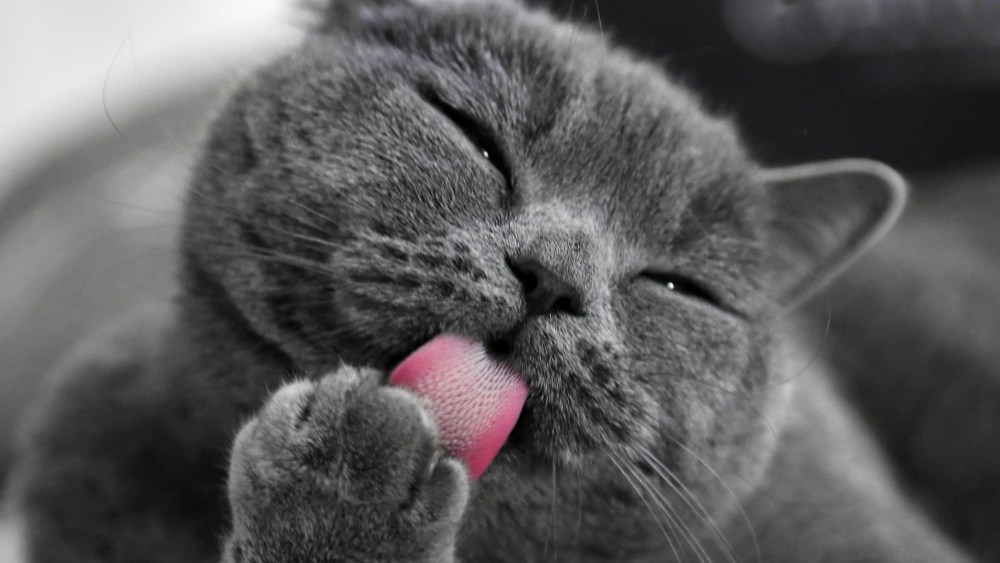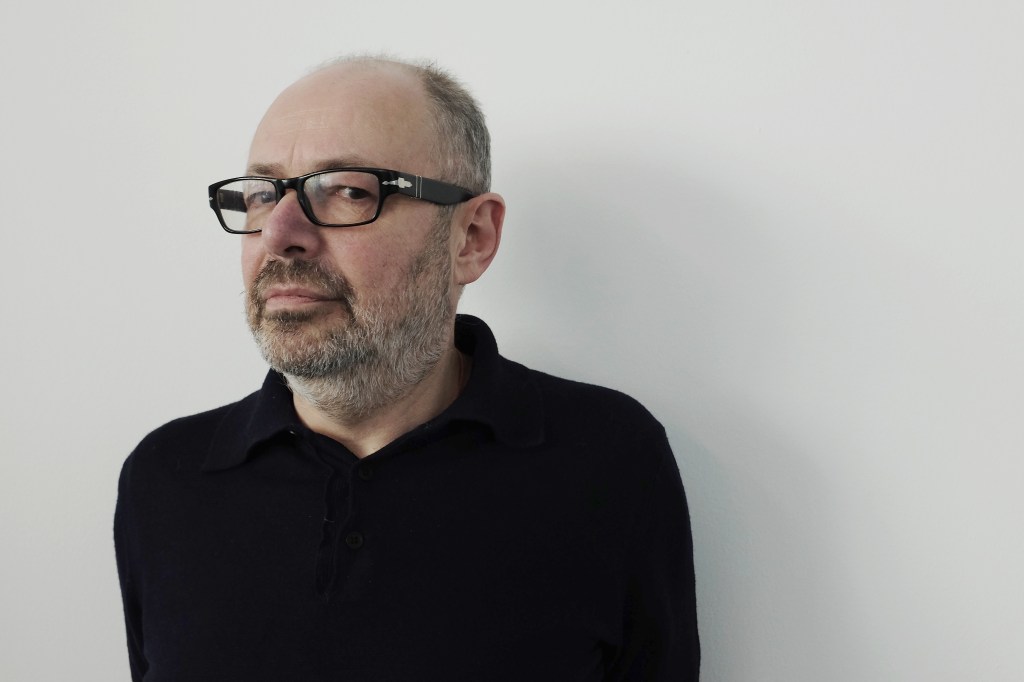What do a cat’s prickly tongue, a pine cone and fungus all have in common? On the surface, not much. But dig deeper, and each is inspiring a facet of the beauty industry.
That’s because cosmetics- and fragrance-makers are looking to nature like never before as biomimicry — the imitation of natural properties or functions — gains traction.
Ideas for products and services have been gleaned from nature since time eternal, but the convergence of biotech, machine learning and companies’ quest for ever more sustainable practices is making it easier to replicate natural processes to create disruptive innovation that’s scalable.
Related Articles
This is game-changing beauty’s paradigm.
“How do we create sensoriality for a cosmetic product by other means than the polymers that we are using today? How do we create colors by other means than pigments?” asked Delphine Bouvier, international director of research and innovation at L’Oréal. “The idea is to utilize biomimetics as a scientific discipline to understand how nature is creating and developing those functions, and to apply them in our industry and in our products.
“Nature knows how to solve all those challenges with [few] resources, local resources and low temperatures,” she said. “Studying nature is the best way to make sure that what we are developing is sustainable in the long run.”
“Nature is beautifully designed as is, and it has already probably through evolution figured out problems and designed itself to tackle those problems,” agreed Jaime Emmetsberger, director of the Estée Lauder Cos.’ Advanced Technology Pioneering team. “So we look to different areas within nature to help develop our technologies.”
“By observing these solutions, we can find leads,” echoed Karl Pays, research director at LVMH Moët Hennessy Louis Vuitton, explaining these are not necessarily a solution unto themselves. “We are going to amplify [those] with the technology which is available today. There is an acceleration of the way mimicry is driving our research.”
L’Oréal, among other companies, now uses biomimicry transversally. On a product level, for instance, in trying to assess how its end-consumer might use less water, the group studied cats’ grooming behavior. They learned that how their tongues are structured, with prickles, helps them clean fur. And cats’ saliva creates an enzymatic process breaking down dirt.
“We studied it to understand how that could be applicable and relevant for a hygiene product,” said Bouvier, noting the work took place at Ceebios, a center of study and expertise in biomimicry in France, which L’Oréal cofounded.
The group subsequently created a prototype of a device that imitates a cat’s tongue that might be associated with a specific formula with which people can clean themselves.
“The market is not ready for it,” said Bouvier. “But we are continuing working on that kind of concept, where we hope one day to be able to propose a routine that helps save a little bit of water — and in particular hot water.”

L’Oréal also studies crickets, since the noise those fragile insect makes throughout their lifetime results from mechanical stress. “This is quite interesting to study to better understand the resistance of materials,” said Bouvier.
To help comprehend how nature protects itself from UV radiation, L’Oréal looks to trees, which are constantly under the sun yet don’t burn. That is because tree leaves are coated with specific wax structures that reflect damaging rays. “We replicated with specific waxes the [micro-]structure and demonstrated that this is possible, at least in vitro, to reflect the light,” said Bouvier.
The group took a cue from the blue morpho butterfly’s wing color, which is created without pigment. The Estée Lauder Cos. leveraged butterfly-wing structure, as well, to give the optics of pearlescent colors.
“In nature, there are colors everywhere, and in most cases they are made by structural organization,” said Pays. This is at a micrometer scale, with layering and reliefs. Gathering data on that is key to understanding the link between the function and structure.
“The most complicated step comes after: How can we redesign with the existing technology what nature is doing very efficiently and quickly in the lab?” said Pays. “And how can that be scaled up?”
Hop to It
Ever wonder how grasshoppers — and other insects — can jump multiple times higher than themselves, countless times per day? It’s due to a protein, called resilin, that acts like a spring with no energy loss.
Smart Resilin, an Israeli beauty tech start-up, combines the strongest plant material, nanocellulose, with resilin, that’s billed to be the most resilient and elastic material in nature. The company develops the resilin through a bacteria fermentation process.
“It has great film-forming properties,” said Lena Ishkov, vice president of business development at the company, noting that it’s also biodegradable. It will first be used in antiaging skin care and hair-styling and -relaxing products.
Mibelle Biochemistry researchers took note of how pine cones are closed in humid conditions but open in drier environments. The active ingredients supplier applied that fact to hair care.
“The surface of the [hair] cuticles are open when the fiber is dry, and when the fiber is rather well-moistened and hydrated, the cuticles close and the hair is shiner,” said Stéphane Poigny, director of R&D France. “It’s really the same concept.”
So Mibelle developed a pine cone extract for the PinoPlex active ingredient. It also created biomimetic ingredients gleaning inspiration from fish mucus, which acts as a sunscreen, and MossCellTec No. 1, considered to be the first active ingredient from biotechnologically produced moss, which claims antiaging qualities.
Beauty tools have benefited from biomimetics, as well. Estée Lauder created cosmetic applicators that are like flower petals, which help with a product’s proper laydown.
“We also generate ingredients [by mimicking] environmental conditions,” said Emmetsberger, who gave the example of moringa seeds, which the company environmentally stresses to produce more potent isothiocyanates that are good for skin care.
L’Oréal uses biomimetics when it comes to packaging, on its campus and for the waste stream, too. This is part of the group’s strategy to meet its sustainability targets, called L’Oréal for the Future, set for 2030, which includes having 95 percent of its formula ingredients biobased, derived from abundant minerals or from circular processes.
L’Oréal has built an ecosystem of partners to expand biomimetic functions. With NovoBiome, for instance, it is working on technology that helps clean soil by aping how fungus does that in the forest. This could be applicable for maintaining the group’s factories.
Beauty companies often look to the human body’s functioning for inspiration. Unilever poured such biomimetic learnings into its robots.

“That opens a whole new world, because we can automate our discovery and get consistency,” said Jason Harcup, chief R&D officer of Unilever’s beauty and well-being division. “You can sample many, many more formulas.”
The company has created robots that imitate pro hairdressers’ systematic washing and conditioning techniques 24 hours a day. That allows for 120 different formulas to be sampled daily.
For its robots, Unilever has been inspired by the human body’s nervous mechanoreceptors, which give senses of touch and pressure, among other sensations. A robot, named Stevie, working in Unilever’s Materials Innovation Factory, has mechanoreceptors that can ape a human’s fingertips.
“You’ve got remarkable acuity in your fingertips,” said Harcup. “So when you’re putting shampoos, conditioners and skin creams together that maybe have sunscreens in them and things like that, you don’t want that gritty feel. You want it to feel smooth. We need the robotics and the biomimetics to help us discover these things faster, because first to the prize is important.”
On the fragrance front, Estée Lauder partnered with Exuud to deliver scents using a plant-derived, biodegradable polymer blend.

“It’s aimed on revolutionizing how we interact with fragrance,” said Emmetsberger. The dose-on-demand technology eschews heat and aerosols, and instead uses the biopolymers that mimic a natural phenomenon — how a breeze can spread a scent of blooming flowers.
LVMH has gleaned biomimetic inspiration from plants, including Rose de Granville. “There are many interesting solutions that exist in plants that can be adapted — and even augmented — for benefits to the skin,” said Pays.
For cosmetics-making, LVMH often extracts actives from flowers and other plants in a process using solvents. But the range of their solubility is limited. “Inspired by plants, we have created NaDES, or Natural Deep Eutectic Solvents, which is a solvent that enables the solubility of intermediate compounds, like polyphenol,” said Pays. “Thanks to that, we have created a new extract of rose that was not existing before.”
Equal Opportunity
No beauty category is immune to biomimetics. For hair care, researchers not only take a cue from insects and other external natural occurrences, but from what’s going on in people’s bodies, too.
Procter & Gamble uses biomimetics across numerous brands, through proteomics, to look inside hair fibers. The aim is to then imitate the connectedness of proteins, which are there to build back strength that diminishes as proteins break down.
“It’s not always an exact model of where we want to go, but it’s more informed choices for what we can do to build back a structure,” said Jeni Thomas, P&G’s science communications director at P&G hair. She added biomimetics can lead to a better result with fewer trade-offs, because it allows for a more specific design, like nature’s blueprint.
For example, Herbal Essences tapped the botanical research conducted by Kew Gardens to deepen its understanding of plant-hair parallels. One insight is certain elements of grape seed oil’s antioxidant benefits are what colored hair can use to prevent fade. “That’s one case where it’s looking at: How do grapes maintain color bodies within them when they’re surrounded by oxidizing UV rays?” said Thomas.
Due to today’s technology allowing for the tracking of hair fiber’s inner structure there’s better understanding of its most complete, healthiest state, as well as when it’s damaged, in terms of composition, structure and location.
Pantene launched Extreme Damage Care Regenerative Oil Blend Shampoo, which has lipids designed to simulate hair’s natural oils that are lost from damage.

“We selected specific oils that we knew had the right composition, that could get back into the spaces that were vacated by hair’s original oils or lipids,” said Thomas. “And that once they got there, they could impart similar properties.”
Unilever’s Dove brand has RE+EAL Bio-Mimetic Hair Care that is billed to imitate hair’s natural self-protection process and to visibly repair it.
The company’s scientists look to nature for plant-derived systems to mimic other materials a human body is missing, like collagen. Today, there are between 28 and 30 known types that decline with age that then causes wrinkles.
“How do we get the right collagens? We’ve done a lot of work with plant-derived feedstocks,” said Harcup. Those are fermented to spin out the collagens that are then added to formulas for brands such as Dermalogica.
Fabienne Sebaoun delved into how skin functions before founding her dermocosmetics brand Mimétique. Sebaoun’s goal is to mimic skin to make it work at its best potential. The brand uses a proprietary Skin Mimetic Restore Complex, or SMR-C5, that combines five biomimetic active ingredients naturally found in skin. They were chosen for their protection, hydration and regeneration attributes.

For his part, plastic surgeon Jason Diamond created an at-home three-step skin care system formulated with skin-identical molecules to help rejuvenate, repair and rebuild the skin’s regenerative networks. For the products, replicating humans’ platelet-rich plasma was the focus.
“How can we take those and turn them into a product that could mimic the procedures we’re doing in office,” said Jessica Combs, acting chief executive officer and a cofounder of Dr. Diamond’s Metacine. “Bio-engineered growth factors that were human-identical were what we researched and decided were really on the cutting edge of what’s going on in skin care.”
She said with bioengineering, it’s like the floodgates have opened. “Because with this, you can almost create anything that’s in the human body and make it so that the body recognizes it as cells,” said Combs.
Just the start
Biomimetics will increasingly inform beauty developments. “The great thing about advances in biomimetics is that they are providing the means to be able to deliver personalized solutions more and more, and the insights into what personalized solutions might be,” said Harcup.
Already, Unilever is using a smart biomimetic technology called Pro Lipids, which helps increase ceramide production when needed to improve skin health, in products for Vaseline, Pond’s and Dove.
“That’s a good start,” said Harcup. “But as time goes by, the ability to have bespoke solutions, which have been discovered using biomimetic principles and delivered potentially using biomimetic principles, is going to be exciting.”
Thomas believes there’s a huge opportunity to use mimetics for more bioengineered ingredients for tailor-made solutions. “The power of mimetics is knowing exactly the structure that you want to borrow inspiration from,” she said. “As these tools progress that lets us know these structures even better, it just opens up more opportunity.”
Machine-learning, for instance, can allow for the understanding of how thousands of ingredients interact and whether they have biomimetic capability for skin or hair care needs. “It’s going to elevate product development,” said Emmetsberger, who described biomimicry like a lock and key.
“If the key isn’t designed properly, you might get some efficacy, you might be able to wiggle the lock a little bit,” she said. “But when you have that perfect fit, then you’ll be able to open the door.”



